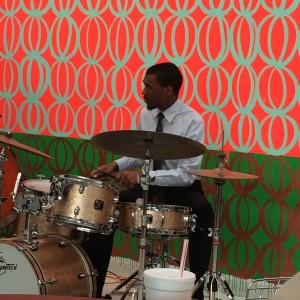 Like bookends at opposite sides of a shelf, for years, I’ve been trekking out to Hyde Park the first weekend of June for the 57th Street Art Fair and making a return visit the last Saturday of September for the Hyde Park Jazz Festival. For me, summer is what happens in between these cross-town sojourns.
Like bookends at opposite sides of a shelf, for years, I’ve been trekking out to Hyde Park the first weekend of June for the 57th Street Art Fair and making a return visit the last Saturday of September for the Hyde Park Jazz Festival. For me, summer is what happens in between these cross-town sojourns.
Hyde Park has long been a special neighborhood in Chicago. In 1893, it was the site of the World’s Fair, which, supposedly, was visited by one out of four Americans. It is also the home of the University of Chicago, the Midwest equivalent of an Ivy institution, whose motto, a testament to academic rigor, is “where fun comes to die.”
The neighborhood’s jazz festival features an abundance of local talent whose fans happen to span the globe. This year’s lineup included saxophonist Ernest Dawkins, vocalist Dee Alexander, and a true master of the keyboard, Willie Pickens, who at 83 is as entertaining as ever.
I make it a point, before I approach Hyde Park Boulevard, to plot out who I want to see and what venues I want to visit. Performances take place at about a dozen venues over eighteen hours. I might try to see some favorites, but I am very happy to check out acts that I’ve never heard before.
My first stop of the day was to see journeyman sax man, Eric Schneider, a frequent headliner at The Green Mill, play with his group in the courtyard of the SMART Museum, the University of Chicago’s art museum. At the end of the set, they announced that a sixteen year-old kid, the next Coltrane. was going to be blowing his sax at the museum’s café. Of course I was skeptical, but I had to check it out.
Maybe I’ve fallen into a common baby boomer syndrome. I get irritated easily with young people. I’ll critique their conversational vocabulary and find it thin. (There has to be another way to describe something you like other than to say it’s sweet or awesome.) I’ll shake my head when I witness two or more people, who are obviously hanging out together, engrossed in a frenetic texting episode, apparently preferring to communicate with someone who is not with them.
Saturday, after seeing such a scene, I wondered if youthful passion and energy still existed.
Then I walked into the café at the SMART Museum, an airy white room with very minimalist, very Euro white chairs suitable for a Lavazza espresso poster. Around fifty people of different ages were transfixed by the sight of four young musicians in the center of the room.
The bandleader, a tall, slim black kid, wearing a white shirt and his Sunday suit, did, in fact, evoke the spirit of John Coltrane. He closed his eyes as his thin fingers moved knowingly over the keys of his tenor sax as he went off on improvisations.
His concentration and technique was amazing. His connection to the music was authentic and mature. As I caught myself worrying over whether his pants would slide off his skinny frame, I had to shake my head in disbelief. He was only sixteen.
“That’s my nephew,” a compact middle-aged man wearing a baseball cap and a very wide smile whispered to me as I found a seat. He then went on to point out the musician’s mother, who was recording a video, his father, who started him off on a musical path when the boy was five, and his younger brother who was developing into a fine jazz drummer.
Isiah Collier played with a guitarist, a bassist, and a drummer. All of them played with serious expressions but with great joy. In every solo, I saw each displaying their individual character without trying to upstage each other. They always practiced impeccable technique and gave each other visual cues of intent.
Seeing a young man, humbly radiating his light, in a state of pure potential, respecting those who have walked his path before, is no small thing.


Leave a comment